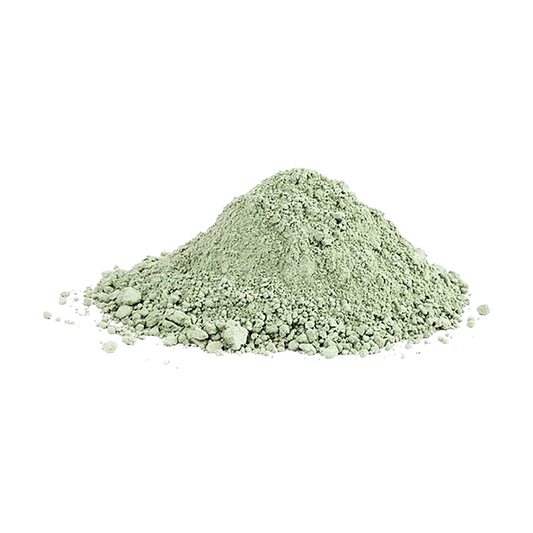Understanding Kapha Dosha: Traits, Imbalance Signs & Lifestyle Tips for Better Wellbeing
Are you often tired, emotionally heavy, and struggling to manage your weight despite your best efforts? These could be signs of a Kapha dosha imbalance—one of the primary energetic forces in Ayurveda. Whether you’re new to Ayurveda or looking to understand your constitution better, this guide will help you decode the Kapha dosha and discover ways to support balance through diet and lifestyle.
What Is Kapha Dosha?
In Ayurveda, Kapha is the dosha made up of earth and water elements, bringing qualities such as stability, structure, moisture, and calm. It governs growth, strength, and immunity—both mentally and physically.
Kapha is:
-
Cool
-
Heavy
-
Moist
-
Slow
-
Oily
-
Smooth
-
Steady
Kapha is responsible for physical strength, lubrication of joints, and emotional compassion. Everyone has some Kapha in their constitution, but people with a dominant Kapha type tend to express its qualities more prominently.
Kapha Dosha Personality & Physical Traits
People with a predominant Kapha constitution often share the following characteristics:
Physical Traits
-
Strong, solid body frame
-
Smooth, radiant skin
-
Thick, lustrous hair
-
Large, expressive eyes
-
Slow metabolism
-
Tendency to gain weight easily
Mental & Emotional Traits
-
Calm, grounded, emotionally stable
-
Loyal, nurturing, and empathetic
-
Patient and easygoing
-
Excellent long-term memory
-
Prone to sluggishness and attachment when out of balance
Signs of Kapha Balance vs Imbalance
| In Balance | Out of Balance |
|---|---|
| Strong immunity and endurance | Sluggish metabolism and low energy |
| Compassionate and emotionally steady | Emotional heaviness or melancholy |
| Sound sleep and calm mind | Lethargy, oversleeping |
| Steady digestion and appetite | Food cravings, especially for sweets |
| Loyal and dependable | Resistance to change and mental inertia |
How to Balance Kapha Dosha Naturally
Because Kapha is heavy, cool, and stable, it benefits from the opposite: lightness, warmth, stimulation, and variety.
Lifestyle Tips for Kapha Balance
-
Get moving daily with brisk walks, cardio, or dynamic yoga
-
Wake up early—before 6 a.m. if possible—to avoid oversleeping
-
Seek variety: try new routes, hobbies, music, and routines
-
Stay warm and dry, especially in cold or damp climates
-
Practice self-massage with stimulating oils like eucalyptus or rosemary
-
Limit naps, especially during the day
Kapha-Pacifying Diet Guidelines
Diet is a core component of Kapha balance. Focus on light, warm, dry, and spicy foods, and minimize heavy, oily, cold, or sweet items.
Foods to Favor
-
Grains: barley, millet, buckwheat, corn, rye
-
Legumes: lentils, chickpeas, mung beans
-
Vegetables: leafy greens, cabbage, carrots, beets, broccoli
-
Fruits: apples, berries, cherries, pomegranate (preferably dry or cooked)
-
Spices: ginger, black pepper, turmeric, cinnamon
-
Dairy (in moderation): thin lassi, buttermilk, small amounts of ghee
Foods to Reduce or Avoid
-
Heavy dairy: cheese, whole milk
-
Sweeteners: sugar cane (except aged jaggery)
-
Cold/raw foods: especially cold drinks and raw tomatoes
-
Oily/fatty foods: fried or processed items
-
Nuts and avocados
-
Sweet, sour, and salty tastes in excess
Pro Tip: Try to eat meals at consistent times and in peaceful settings. Avoid overeating, and eat only when genuinely hungry.
Key Takeaways
-
Kapha dosha is grounded, nurturing, and stable, but prone to sluggishness and excess weight.
-
Balance Kapha through warmth, movement, stimulation, and lighter foods.
-
A Kapha-pacifying lifestyle and diet can improve energy, mood, and metabolism.
-
Everyone has Kapha—so even if you’re not predominantly Kapha, these tips may help in winter or during periods of stagnation.
Conclusion
Kapha dosha, when in harmony, brings emotional steadiness, resilience, and deep compassion. But when left unchecked, its heavy and moist qualities can weigh down both body and mind. With a few lifestyle tweaks and dietary changes, you can bring this dosha back into balance—inviting more lightness, energy, and joy into your daily life.
FAQs
1. How do I know if I have a Kapha imbalance?
Common signs include persistent tiredness, emotional heaviness, weight gain, slow digestion, and difficulty waking up in the morning. Taking a dosha quiz or seeing an Ayurvedic practitioner can help confirm.
2. Can I be more than one dosha type?
Yes! Most people are a mix of two doshas (dual-doshic), and some even have a balance of all three (tridoshic). You might be Kapha-Pitta, for example, and may need to balance both doshas accordingly.
3. How quickly can I see results by following Kapha-balancing recommendations?
This depends on the individual and consistency of practice. Some people feel improvements in energy and digestion within a week, while deeper changes may take a few weeks to months.
© 2025 Haveda. All Rights Reserved. Haveda does not provide medical advice, diagnosis or treatment. These statements have not been evaluated by the Food and Drug Administration. Products are not intended to diagnose, treat, cure or prevent any disease. See additional information.















